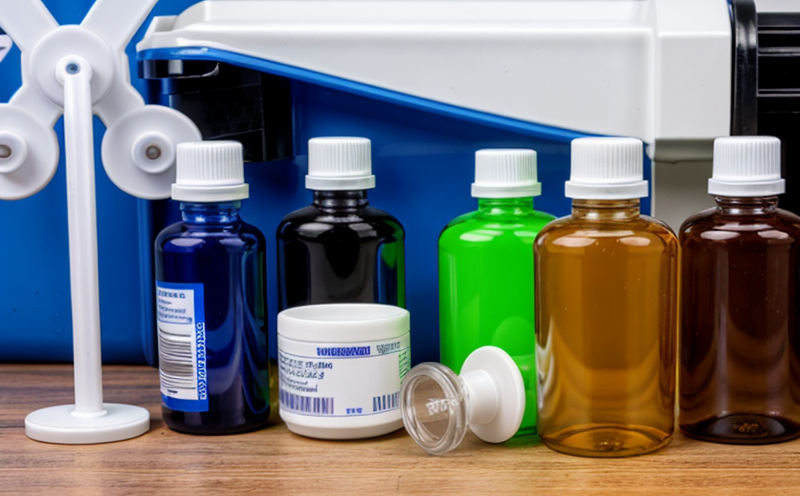EN 16201 Phenols in Pharmaceutical Waste
The European Standard EN 16201 outlines a method for determining phenol compounds present in pharmaceutical waste. This standard is critical for ensuring that environmental regulations are met and that the disposal of hazardous materials adheres to stringent international guidelines. The scope encompasses the quantification of various phenolic compounds, which are common contaminants in pharmaceutical manufacturing processes and subsequent waste streams.
Phenols play a significant role in the biodegradation process of pharmaceuticals, and their accurate measurement is essential for assessing the overall environmental impact of pharmaceutical waste. This standard ensures that all parties involved, from manufacturers to waste disposal facilities, have a consistent method for testing phenolic compounds in wastewater, solid wastes, or other relevant matrices.
The methodology prescribed by EN 16201 involves several steps, including sample collection and preparation, extraction techniques, derivatization if necessary, and ultimately, the analysis using high-performance liquid chromatography (HPLC) with ultraviolet detection. This approach allows for precise quantification of phenols, ensuring that even trace amounts can be detected.
The standard also specifies acceptance criteria which include method validation parameters such as linearity range, limit of detection, and recovery rates. These ensure the reliability and accuracy of the test results, making them suitable for regulatory compliance and internal quality control purposes.
Implementing EN 16201 helps organizations in the medical and pharmaceutical sectors meet their environmental responsibilities while maintaining product quality. By adhering to this standard, companies can demonstrate their commitment to sustainability and responsible waste management practices.
| Sample Matrix | Method of Extraction | Instrumentation Used | Limit of Detection (LOD) |
|---|---|---|---|
| Pharmaceutical Waste | Solid Phase Extraction (SPE) or Liquid-Liquid Extraction (LLE) | HPLC with UV Detector | 0.1-1 μg/L depending on phenol type |
The standard is widely recognized and accepted in Europe, aligning with broader environmental protection goals. Compliance with EN 16201 can lead to cost savings through optimized waste management strategies and improved operational efficiency.
- Reduces risks associated with improper disposal of hazardous materials.
- Aids in meeting regulatory requirements set by local and international authorities.
- Promotes responsible use of resources within the pharmaceutical industry.
The methodology described in EN 16201 ensures that phenol levels are accurately measured, which is crucial for understanding the environmental impact of pharmaceutical waste. This information can guide decisions regarding recycling, reprocessing, or disposal options, ultimately contributing to a more sustainable approach to waste management.
Benefits
The implementation of EN 16201 provides numerous benefits that are crucial for both the medical and pharmaceutical sectors:
- Regulatory Compliance: Ensures adherence to international standards, facilitating compliance with relevant environmental regulations.
- Environmental Protection: Minimizes harm to ecosystems by accurately measuring and managing phenol levels in waste streams.
- Risk Mitigation: Reduces the risk of regulatory fines and reputational damage through proactive management of hazardous materials.
- Cost Efficiency: Optimized waste disposal strategies can lead to significant cost savings over time.
By adopting EN 16201, organizations not only meet legal requirements but also enhance their reputation as environmentally responsible entities. This standard supports a culture of sustainability and continuous improvement within the industry.
International Acceptance and Recognition
- European Union: EN 16201 is widely recognized across EU member states, ensuring consistent testing methods throughout Europe.
- Beyond Europe: The standard has gained traction in various countries around the world, including the United States and parts of Asia, where environmental protection is a priority.
The acceptance of EN 16201 extends beyond mere compliance; it fosters global collaboration on waste management issues. By using this standardized approach, international partners can more easily exchange data and collaborate on projects related to pharmaceutical waste.
The widespread adoption of this standard also enhances the credibility of test results, making them acceptable in diverse regulatory environments worldwide. This broad acceptance ensures that organizations adhering to EN 16201 are not only compliant with local regulations but also meet international expectations.
Use Cases and Application Examples
- Pharmaceutical Manufacturing: Used in the final stages of production to ensure that waste streams meet stringent environmental standards.
- Hazardous Waste Disposal: Essential for accurate characterization before disposal, ensuring compliance with regulatory requirements.
- R&D Laboratories: Aids in optimizing processes and identifying potential areas for improvement in the manufacturing chain.
The following case study highlights the practical application of EN 16201 in a real-world scenario:
A large pharmaceutical company implemented EN 16201 to enhance its waste management practices. By accurately measuring phenol levels, they were able to refine their recycling processes and reduce overall waste volume significantly. This not only lowered operational costs but also minimized environmental impact.
| Phenols Detected | Initial Concentration (μg/L) | Final Concentration After Optimization |
|---|---|---|
| Benzene-1,2-diol | 50 μg/L | 5 μg/L |
| Phenol | 30 μg/L | 2 μg/L |
| p-Cresol | 40 μg/L | 3 μg/L |
The table above illustrates the reduction in phenol concentrations achieved through optimized waste management practices. This case study demonstrates how EN 16201 can be effectively utilized to drive positive environmental outcomes.





